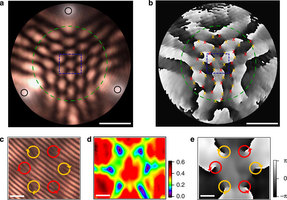
Tunneling of electrons through a potential barrier is fundamental to chemical reactions, electronic transport in semiconductors and superconductors, magnetism, and devices such as terahertz oscillators. Whereas tunneling is typically controlled by electric fields, a completely different approach is to bind electrons into bosonic quasiparticles with a photonic component. Quasiparticles made of such light-matter microcavity polaritons have recently been demonstrated to Bose-condense into superfluids, whereas spatially separated Coulomb-bound electrons and holes possess strong dipole interactions. We use tunneling polaritons to connect these two realms, producing bosonic quasiparticles with static dipole moments. Our resulting three-state system yields dark polaritons analogous to those in atomic systems or optical waveguides, thereby offering new possibilities for electromagnetically induced transparency, room-temperature condensation, and adiabatic photon-to-electron transfer.
From: G. Tosi, G. Christmann, N.G. Berloff, P. Tsotsis, T. Gao, Z. Hatzopoulos,
P.G. Savvidis, and J.J. Baumberg
“Geometrically locked vortex lattices in semiconductor quantum fluids”
Nature Communications,
3, 1243 (2012).

